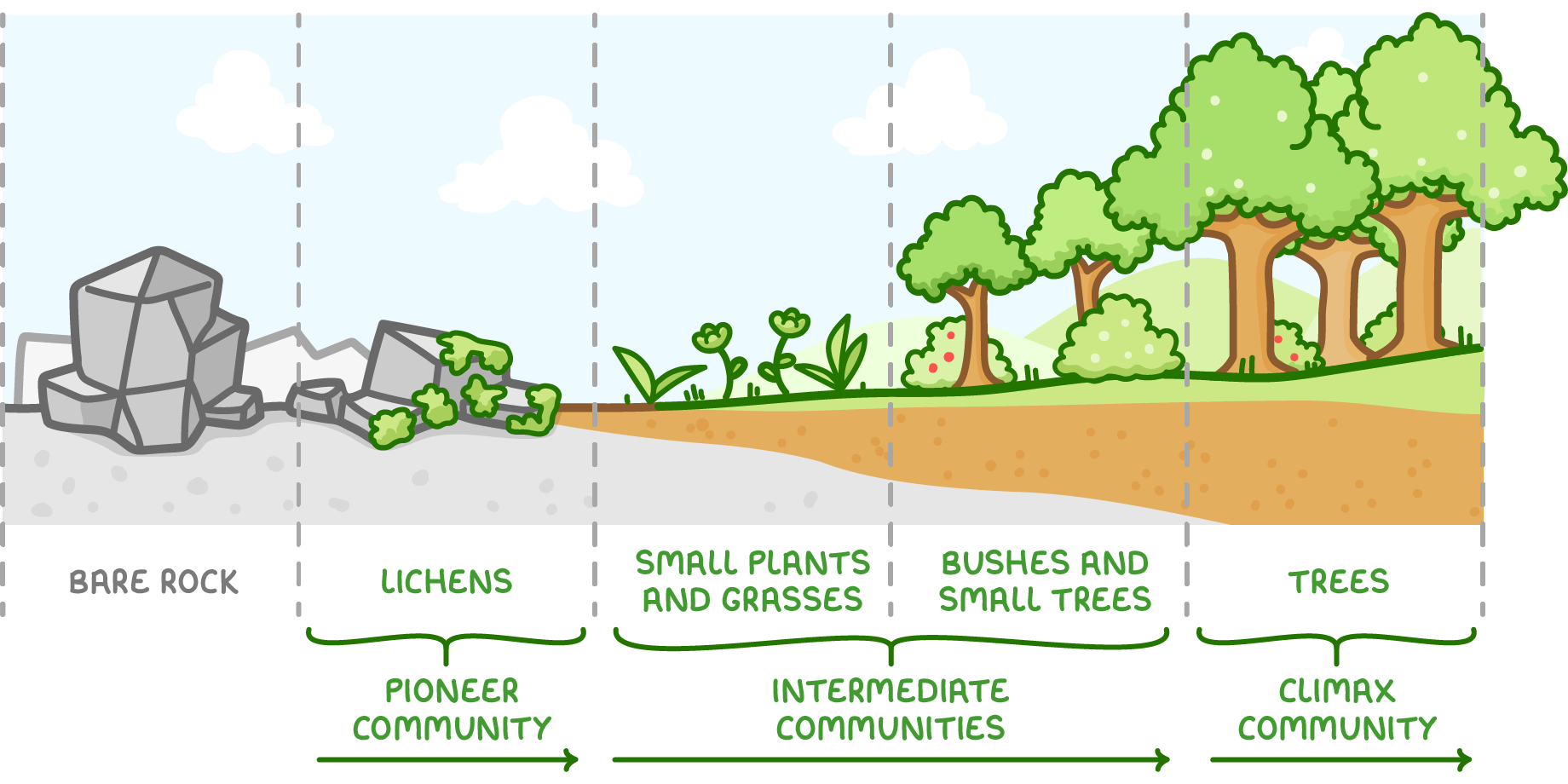Succession
This lesson covers:
- What succession is
- The stages of succession
- The difference between primary and secondary succession
- The features of communities at each stage of succession
What is succession?
Succession is the process by which ecosystems change over time due to changes in the environment, causing the plant and animal species present to change. As environmental conditions change, different species can colonise, outcompete, and replace the species that were there previously.
There are two main forms of succession:
- Primary succession - This occurs on newly formed or exposed land with no soil or organic material (e.g. fresh volcanic lava).
- Secondary succession - This occurs in areas where an existing community has been removed, leaving the soil intact but with no plant or animal species (e.g. an area that has experienced a forest fire).
Stages of succession
Each phase in the process of succession is known as a seral stage. During these stages, key species alter certain abiotic factors of the environment.

Stages of succession include:
- Initial colonisation by pioneer communities - These pioneer species can cope with the extreme initial conditions (e.g. lichen or algae).
- Alteration of conditions by pioneer species - They contribute organic matter, helping in soil formation and making the environment more hospitable for other species.
- Settlement by intermediate communities - Intermediate species (sometimes called secondary colonisers) move in when the soil improves and continue to modify the environment (e.g. fern plants).
- Diversification of intermediate communities - Over time, the variety of species and biomass grows, leading to the arrival of larger and more complex organisms.
- Development of climax communities - These are stable ecosystems with a balanced equilibrium of species, characterised by a small number of dominant plant and animal species that are rarely replaced by new species.
Animal succession occurs alongside plant succession. Primary consumers such as insects are the first to arrive, with secondary consumers following once a reliable food source is present.
Features of communities at each stage of succession
Pioneer communities have adaptations that allow them to modify abiotic factors and endure in harsh environments. They help with soil formation, water retention, nutrient enrichment, and provide shelter.
Typical adaptations of pioneer communities include:
- Ability to reproduce asexually.
- Seeds that are dispersed by wind.
- Rapid germination.
- The ability to photosynthesise.
- Nitrogen fixation to enrich soil.
- Extreme condition tolerance.
The table below compares the key characteristics of pioneer, intermediate, and climax communities.
| Community features | Pioneer community | Intermediate community | Climax community |
|---|---|---|---|
| Biodiversity | Low | Increasing | High, but typically lower than intermediate communities |
| Stability | Least stable | More stable | Most stable |
| Growth rate of organisms | Fastest | Slower | Slow |